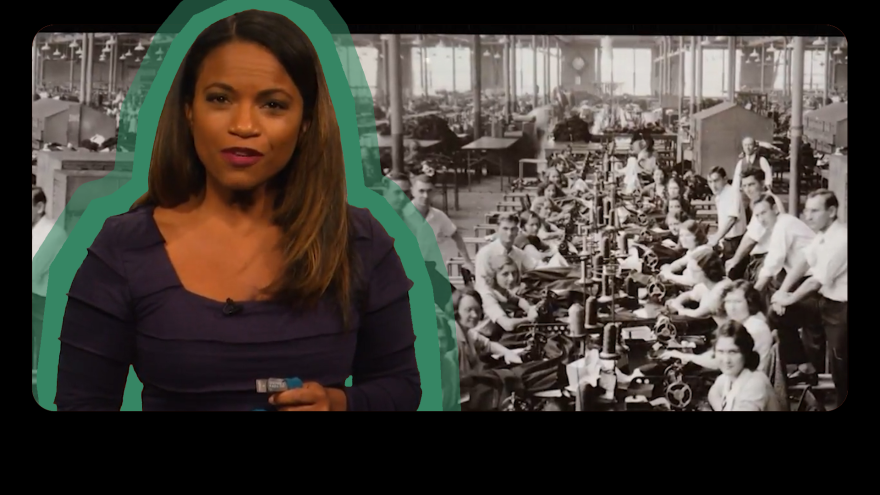Nowadays, we are used to our clothes being made in faraway countries, but it wasn't so long ago that Cleveland was the center of the garment industry. Learn more about the factories and the folks that fashioned our country.
Class Discussion Questions:
1) Why is Ohio a good place for manufacturing? Consider the geography.
2) What change implemented by Richard Feiss in his factories was most important? Support your answer.
Read the Script:
If you look on the tags in your clothes you might be surprised to find out just how far they've come to make it on your back. Places like China and Vietnam are hot spots for the garment industry today. But would you believe back in the day, Ohio was one of the top places for clothing production in the U.S.
In the 1920s, Cleveland alone was making almost as many garments as New York. Before then, though, in the 1800s, clothes were still made all by hand, stitch by stitch. Women sewed their family's clothes. Uniforms, like those for the military, brought about the need for ready-to-wear clothing. That is, clothing that you can buy in stores, off the rack.
In the 1860s ready-to-wear clothing took off. This was the result of a couple of factors. Better standard sizes were developed for men's, and then women's, clothing. Technology took off and the population of cities, like Cleveland, was rapidly increasing. The garment industry found a home in Cleveland were residents were willing to work hard.
One major example is the Joseph and Feiss Company. The founder, Kaufmann Coke, set up shop in Cleveland in 1845. The company became known for it's $15 men's suit, which sold under their Clothcraft brand. In 1909, Richard Feiss, son of the Feiss that the company was named after became manager of the factory.
He brought in new ideas to make the company more efficient and also just a nicer place to work in general. They designed chairs that were more comfortable for long hours of work and held social events. The company even introduced a five-day work week in 1917, which is what we still have today.
However, when businesses might have been booming, workers at many factories were still feeling mistreated. They worked very long hours for very little pay. To have more of a say in their work environments, many employees banded together to form unions. The unions joined forces and thousands of employees went on strike to ask for better work environments and wages in 1918 during World War I.
To avoid the halt in making war uniforms, Cleveland Mayor, Newton Baker, who was also the United States Secretary of War, stepped in. He helped both sides agree to a wage increase. And so production continued, but it couldn't last forever. By the 1930s, the decline in Cleveland's garment industry was under way.
After one last boost in production for World War II, the industry was definitely on its way out of here. We couldn't continue to compete with New York City, and Ohio companies found cheaper labor in the South and eventfully over seas. And as you can see, that is still where most clothes are produced today.
Learn a little more...with a link!
Website Article: Cleveland.com, Making Suits in Cleveland through the Years | Browse these vintage photos of the garment industry once almost as big a New York City’s.
Website Article: muka kids, How Ethical Clothing Is Made | Follow the step-by-step process from farm fields to the factory.
Video: TedEd: The Life Cycle of a T-shirt | Two billion t-shirts are made annually. What happens to yours?




